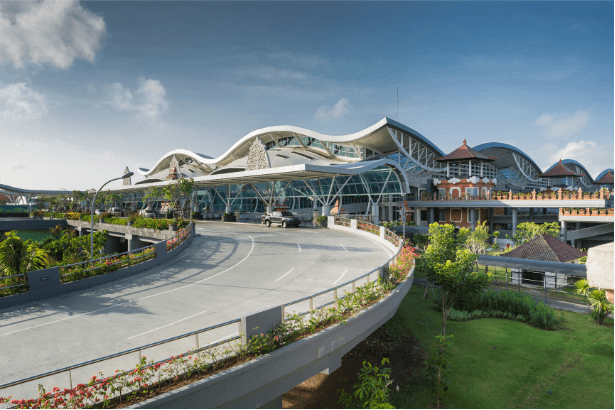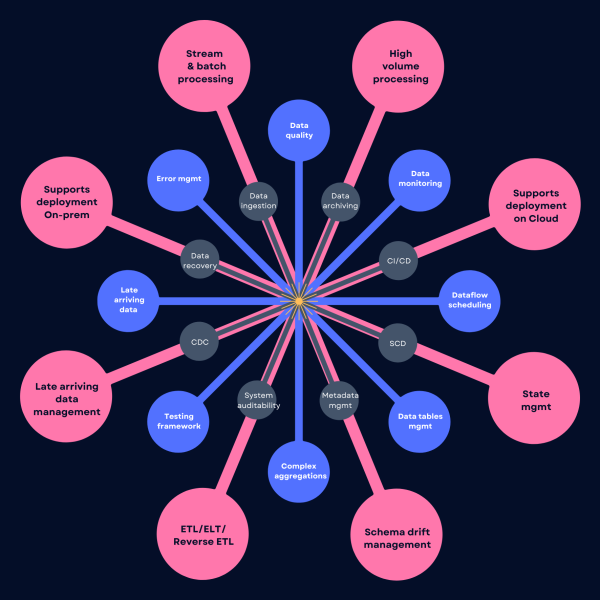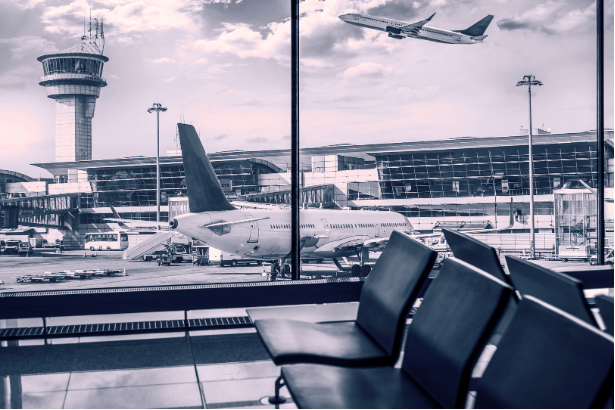Good and bad
Welcome to the next issue of our real-time analytics blog. Now that the summer holiday season is upon us, many of us will be using air travel to get to their destinations of choice. This means, we will be going through the airports.
As passengers, we have love-hate relationships with airports. Some have a “wow” factor. They would feature impressive architectures and interior designs, made to look like modern works of art. Some are like mini-cities, offering everything you can think of inside their sprawling complexes, even ice-rinks and waterfalls. Singapore’s Changi is a prime example, regularly listed as the best airport in the world. They strive to offer more than just funnelling people to and from the boarding gates through the shopping arcades.
The ones that do not (large and small in equal manner), usually give us unpleasant experiences of dull grey exteriors, dated interiors, cramped facilities, “in-your-face” shopping, boring food options, and, at times, few places to just sit down while waiting for your next flight. Air travel can be stressful in general. Poor airport experience makes it much more so. Everyone hates bad airports, dreading flight delays and hoping to get through them as quickly as possible.

Airport’s sources of income
But that is a big problem – airports want us to spend more time on their premises, not less.
Airports primarily make money from passenger services, starting from onsite car parks and all the way to the airplanes on runways. They collect revenue from both the passengers directly at the point of consumption (e.g. parking, food, shopping, lounge access) and via the airline (or another third-party service provider) for passenger and baggage processing, leases and rent, ramp usage, aircraft parking, navigation services and the runway use.
The more of us that travel though the airport, the more revenue they make on sheer throughput. So, the more time we spend inside, the higher the likelihood of us buying goods and services.
Sweat the assets
And the airports do try to make money everywhere they can. Passenger fees are regulated in many jurisdictions, limiting their upside earnings, so the airports turn to other revenue sources. Some are really pushing the boundaries of decency with the fees for drop-off and pick-up at the curb side or charging extortionate rates for parking. We hate it, but we live with it.
Airports can get away with it mainly for two reasons:
- We are a captive market, i.e. we cannot always easily switch to another airport due to long travel distances, airline or destination availability.
- Busy airports are unable to materially grow passenger volumes without significant additional investment in infrastructure (e.g. new terminals, gates, runways). So, they opt for maximising revenue from the existing infrastructure for as long as possible – sweat the assets.
While some choose this strategy, other airports invest in creating a more positive passenger experience. New and challenger airports, which attempt to stimulate new traffic and attract customers away from the either the main hubs or even other countries are generally more proactive in this area. Dubai International is one such example.

The people’s choice
Why they bother, you ask?
Simply, they realised that a happy customer spends longer time at their facilities and consumes more goods and services.
Some airports are even taking this approach to the next level. You can visit an exotic aquarium before the flight to keep the kids entertained and then spend a few bucks at the giftshop. Or you can grab a (brewed on site!) cold mug from a beer garden and celebrate Octoberfest with your mates. How about engaging in traditional cultural experiences after a high-quality meal? Such experiences make the journey more memorable for the passengers and also generate good incremental revenue for the airports.
Those are the exceptions, however. Generally, most well-run airports just focus on getting the basics consistently right, while balancing the economics. Get the passengers through the stressful parts (check-in, security, immigration and boarding) with as little fuss as possible. Then give them space to relax and provide a variety of quality shopping, food and service outlets. Combine this smooth passenger experience with a reasonable operating cost, tasteful design, logical layout, clean facilities, and friendly staff, and you got yourself a winner.
Airlines will find it easier to grow there and thus attract even more revenue-generating passengers to the airport.

The data angle
How do they decide what works?
Airports use plenty of data when developing their services. They track the number of cars going through the car parks and the amount of time they spend there (short/medium/long term), for example. They also have stats on what proportions arrive by other modes of transport (and the cost of the train/bus/taxi services), so they can then determine what to charge for parking and whether to introduce drop-off fees (and for what duration).
Airports also collect shop data to understand sales. Data from cafés, bars and restaurants drive insights into the customer spend and preferences with regards to their food and drink choices. This data also helps to determine the lease rates the airport charges to third-party sellers.
Occasionally, they would conduct passenger surveys to determine traveller profiles (business/leisure), whether they are connecting or flying direct, going on a long trip or short, which airline they use, etc. The survey data is both quantitative and qualitative, which require a lot of post-processing before it can be used for analytics.
With all the data the airports are currently able to collect, the best they can do is understand historical trends using estimates. Trouble is, airports do not know the exact number of passengers going through their terminals. They don’t know precisely how many customers visited their shops, restaurants, lounges, toilets, etc.
At times, the pressure to grow volumes outstrips their ability to handle the passenger traffic inside, so we end up with long queues, crowded facilities and general chaos. Anecdotally, on the ground, the staff will know their pinch points by day of week and time of day. But globally, they cannot measure the flow of people precisely.
Technical limitations
Why not?
Because of the way the data is collected and shared (or not shared). Hardly any of it is collected or analysed in real-time, as the passengers move through the terminals. Security cameras are not designed to take count of the people movements and there are no other sensors installed to handle the task.
Certain areas, like passport control, will have the exact number of passports processed, but that data misses domestic travel. Security screening does not count the people going through it. Check-in information is collected but not shared until much later, because a growing proportion of check-ins are done online and never interact with the desks anymore.
The airports must then rely on the passenger data provided by the airlines, but it comes as a summary report issued periodically and requires careful reconciliation after receipt to integrate with other data sources. The airlines themselves spent an eternity processing the actuals due to how they do record-keeping.
What the airports need is an ability to measure the flow of people as they move through the terminals in real-time. This live data needs to be dynamically “triangulated” with the secondary sources: check-in desks, security screening, passport control, boarding gates, shops, food outlets, lifts, lounge desks, etc. – everywhere where a physical measurement is taken.
Naturally, the data must be fully anonymised (also in real-time) to make such analytics feasible. Then you will get to a point where you can use the data to do some very clever stuff indeed.
Deeper insights with real-time data
But what benefits does this granularity bring?
It enables robust operational analytics (OA). The airports can do much more accurate capacity planning once they better understand the flows by season, month, day of week, time of day, even by the second.
Where do people congregate more and why? And for how long? Is it related to a particular flight / gate location, specific facility (e.g. restaurant or bar) or some other reason? Should we send extra staff to chaperone the passengers to other locations or deliver more snacks?
If there are delays with a risk of multiple flights all unloading passengers in the same terminal space at once, the airport can dynamically re-direct some of the flights to lesser congested parts of the airport and reduce the strain on the services.
More revenue and efficient operations
On the revenue generation side, if, say, a passenger downloaded the airport app, they could receive live offers and promotions based on their location inside the airport, thus driving more footfall through the shops and food outlets. The data will also demonstrate what is popular and what’s not, thus allowing to develop a better-matching selection of shops and food offerings to drive higher sales. We have been working with partners on integrating live sensor data with an airport app for just that use case.
Using the same app, the airports could provide precise location services to the passengers, such as directing them to their “meet and greet” points, private taxis, even family members. Baggage tags can be scanned as they are loaded on the belt, and the data streamed to the app, thus reducing crowding at the baggage collection.
Naturally, the airports will be able to apply predictive analytics capabilities on this data and redeploy resources better to manage and alleviate pinch points before they develop. With such data granularity and instant availability, LLM models can be seamlessly integrated into new passenger services and remove pressure on customer services. The sky’s the limit.
We are just covering the front facing services in this blog. But real-time data offers a major boost to all operational settings – ground handling, ATC, airlines.

Better airports with real-time analytics
Operational analytics relies heavily on real-time, production-grade data to offer instant decisioning. It lets you flow information automatically from sensors, systems, DW, etc. to relevant people, systems, tools and apps.
OA’s purpose is to improve business efficiency through the streamlining of operations, enabling fast decisioning (real time allows proactive approach to developing issues), lowering costs (heavy automation), increasing revenue (dynamic packaging/pricing, up-sales), and promoting better collaboration through live data sharing.
Airports stand to gain significantly from real-time technologies, live data integration and dynamic analytics. You can make the passenger experience significantly more satisfying, while at the same time lowering your operating costs and creating additional revenue. It has now become not only possible, but practical to start deploying real-time analytics capabilities fast and cost-effectively.

IOblend makes it possible
We have developed IOblend to act as the OA bridge between the disparate systems and sensors of all sorts. The horizontal layer that works across all infra and systems. No matter how archaic or new the systems are, we can get the data in and out of them. We take care of the data automation, management, governance and quality policies in real time, so that you can focus on value-add activities fast. We help you design and deploy robust data architectures that will scale easily.
OA is our bread and butter. We would love to help you get the most out of your airport operations through better use of data too. Get in touch today and let us show you the art of the possible.
Improving airport operations with real-time data, as opposed to common methods, involves a shift from traditional, static data analysis to dynamic, real-time analytics. Traditional airport management relies on analyzing historical trends using data like car park usage, passenger surveys, and sales from shops, which only provide a retrospective view. IOblend offers a transformative approach, using real-time data from various sources like front desks, turnstiles, and Wi-Fi routers, processed in the cloud, to provide instant insights into passenger flows, space utilization, and operational efficiency. This real-time data processing allows airports to manage passenger traffic more effectively, enhance customer experience, and make more informed decisions about facility usage and service improvements, leading to better resource allocation and increased revenue generation.

When Data Science Meets Domain Expertise
In the modern days of GenAI and advanced analytics, businesses need to bring domain expertise and data knowledge together in an effective manner.

Keeping it Fresh: Don’t Let Your Data Go to Waste
Data must be fresh, i.e. readily available, relevant, trustworthy, and current to be of any practical use. Otherwise, it loses its value.

Behind Every Analysis Lies Great Data Wrangling
Most companies spend the vast majority of their resources doing data wrangling in a predominantly manual way. This is very costly and inhibits data analytics.

Data Architecture: The Forever Quest for Data Perfection
Data architecture is a critical component of modern business strategy, enabling organisations to leverage their data assets effectively.

Mind the Gap: Bridging GenAI Promise and Practice
While the benefits of GenAI are promising, the path to adopting such technologies is not straightforward at all.

Data Automation: Investing Pennies to Save Pounds
Data automation is a critical enabler of efficiency, accuracy, and strategic insight. It also considerably lowers your business cost when producing said insight

